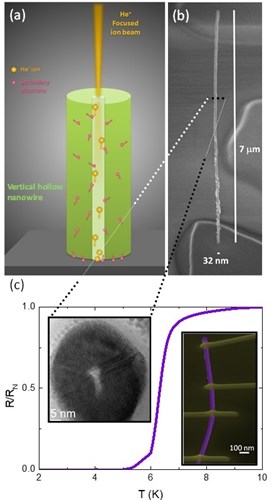The development of on-demand individual deep impurities in silicon is motivated by their employment as a physical substrate for qubits [1], nanoscale transistors [2], single photon emitters [3] and to fabricate Hubbard-like quantum systems [4].
Single-atom silicon devices based on conventional doping elements such as phosphorous [5], arsenic [6] and boron [7] can operate only at cryogenic temperature due to shallow weakly localized ground state impurity levels.
Differently, the implantation of Ge dopants in silicon and the subsequent annealing is expected to generate stable Ge vacancy complexes [8] that are promising candidates to achieve single-atom quantum effects at room temperature.
These hybrid impurities combine indeed the properties of the silicon vacancy, which carries deep states in the bandgap, with the accurate spatial controllability of the defect obtainable through state of the art single-ion implantation of Ge atom.
Two NFFA-EUROPE Theory projects (ID 188 and ID 517) were assigned to UMIL on request of the experimental User Prof. T. Tanii (Waseda University) which developed the ion implantation technique and performed the electrical characterization of GeV-silicon channels, in collaboration with E. Prati (IFN-CNR).
By means of ab initio Density Functional Theory calculation with screened-exchange hybrid functional, that solves the “gap and delocalization problem” of standard DFT, we characterize structural and electronic properties of different GeVn defects.
The calculated excitation energies relative to the addition of electrons into the defect, are in very good agreement with the available experiments, demonstrating the occurrence of a very deep state in the gap. Accordingly, we show that the electrons are more localized than in conventional dopants, decaying in a radius of about 0.5 nanometers from the defect
[9].
Being characterized by very large on-site repulsion U and small electronic hopping t (U/t~250) this system is expected to be a platform to study the Mott transition and magnetic correlation.
By mapping the ab initio DFT results in an extended Hubbard formalism we are able to shed light on the transport mechanisms through an array of GeV complexes in silicon showing that both temperature activated and resonanttransport related features contribute to the conductance, in agreement with the experimental findings [10].
[1]. Pla, J. J. et al. “A single-atom electron spin qubit in silicon.”, Nature 489, 541 (2012).
[2]. Shinada, T. et al. “Opportunity of single atom control for quantum processing in silicon and diamond.” in Silicon, Nanoelectronics Workshop (SNW), 1–2 (IEEE, 2014).
[3]. Aharonovich, I., Englund, D. & Toth, M. “Solid-state single-photon emitters.” Nat. Photonics 10, 631 (2016).
[4]. Fratino, L., Semon, P., Charlebois, M., Sordi, G. & Tremblay, A.-M. “Signatures of the Mott transition in the antiferromagnetic state of the two-dimensional Hubbard model.” Phys. Rev. B 95, 235109 (2017).
[5]. Tan, K. Y. et al. “Transport spectroscopy of single phosphorus donors in a silicon nanoscale transistor.” Nano Lett. 10, 11–15 (2009).
[6]. Hori, M., Shinada, T., Guagliardo, F., Ferrari, G. & Prati, E. “Quantum transport property in FETs with deterministically implanted single-arsenic ions using single-ion implantation.” In Silicon Nanoelectronics Workshop (SNW), 1–2 (IEEE, 2012).
[7]. Khalafalla, M., Ono, Y., Nishiguchi, K. & Fujiwara, A. “Identification of single and coupled acceptors in silicon nano-fieldeffect transistors.” Appl. Phys. Lett. 91, 263513 (2007).
[8] Suprun-Belevich, Y. & Palmetshofer, L. “Deep defect levels and mechanical strain in Ge+ implanted Si.” Nucl. Instr. Methods Phys. Res. B 96, 245–248 (1995).
[9] S. Achilli, N. Manini, G. Onida, T. Tanii, T. Shinada, E. Prati, “GeVn complexes for silicon-based room-temperature single-atom nanoelectronics”, Sci. Rep. 8, 18054 (2018).
[10] S. Achilli, N. Manini, N. H. Le, T. Tanii, T. Shinada, E. Prati, G. Onida, “Quantum transport in GeV:silicon channels”, in preparation.


